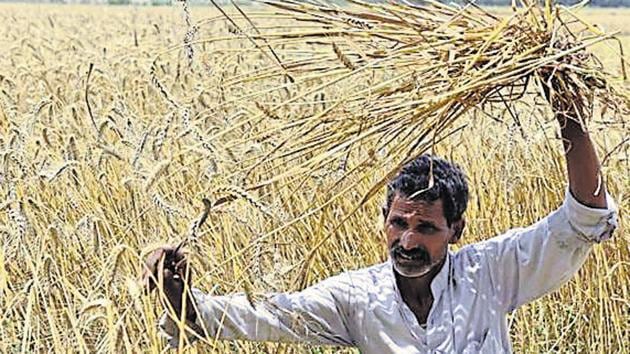Lok Sabha elections 2019: Government offset income slowdown with asset creation in rural heartland
The BJP scored commanding leads across farm belts in major battleground states on the strength of Prime Minister Narendra Modi’s heavy campaigning focused on national security, foreign policy and Hindutva.
The Bharatiya Janata Party (BJP) managed to poll an overwhelming chunk of the country’s rural vote, a clear sign the party successfully overcame a potentially challenging agrarian distress building up over the past four years.

The BJP not just emerged unscathed from a rough patch in the rural economy, but electorally trumped a growing farmers’ movement.
Hatkanangle parliamentary constituency in Maharashtra’s sugarcane belt of Kolhapur is one of a kind. Its representative, Raju Shetti, is the only farmer leader in the country who is also an elected MP. Shetti, who wields considerable influence among sugarcane growers, first won from Hatkanangle in 2009 and then again in 2014.
Late on Thursday, Shetti was behind Shiv Sena’s Dhairyasheel Sambhajirao Mane by over 95,000 votes. Shiv Sena is a BJP ally. Shetti, a key organiser of farmers’ movements in Maharashtra, Madhya Pradesh and even New Delhi, was poised to lose.
The BJP scored commanding leads across farm belts in major battleground states on the strength of Prime Minister Narendra Modi’s heavy campaigning focused on national security, foreign policy and Hindutva.
To be sure, a bundle of welfare schemes targeting the poor and farming households appears to have helped the BJP tap into countryside votes, analysts said.
Also read : ‘Will take everyone along, even opponents’: PM Modi after big win
Nearly 70% of India’s 900 million voters are rural and 260 million belong to farming households.
Prime Minister Narendra Modi launched PM-KISAN, a cash-transfer scheme for poor farmers, from Uttar Pradesh’s Gorakhpur on February 24. The scheme offers a yearly handout of ₹6,000 in instalments of ₹2,000. A total of 57 million farmers received the cash transfers till April 18. In UP alone, 20 million farmers received these handouts.
PM-KISAN is meant for small landed farmers. “But state governments have treated the scheme very liberally, so even virtually landless farmers who just own a kitchen garden have benefited. This scheme has worked well in states such as Gujarat and Madhya Pradesh and seemed to have helped the BJP,” said YK Alagh, an agricultural economist.
Numbers from key states that saw farmers’ protests revealed the extent of the BJP’s success. Maharashtra witnessed several major farmers’ protests in 2018, when more than 50,000 farmers marched 180 km on foot from Nashik to Mumbai, protesting falling returns. By late Thursday, the BJP-Shiv Sena combine was poised to sweep the state, leading in 41 of the state’s 48 parliamentary seats.
Madhya Pradesh’s Mansaur became a flashpoint for farmers’ unrest after five protesting farmers were killed in police firing in 2017. Late Thursday, the BJP’s Sudheer Gupta was poised to defeat the Congress’s Meenakshi Natarajan by over 300,000 votes in this very seat.
According to Nashik-based farm policy analyst Milind Murugkar, while the BJP’s opponents managed to unite farmers’ organisations, they were unable to penetrate landed non-tribal farmer blocs that could swing votes.
Yogendra Yadav, the leader of Swaraj Abhiyan which spearheaded a farmers’ uprising, agreed. “We failed. We mobilized farmer organizations and forced political parties on the back foot (on rural distress), but ultimately farmers voted not as farmers but as Hindus, Kurmis or Yadavs.”
According to Yadav, outfits such as the All India Kisan Sangharsh Coordination Committee, a coalition of around 200 farmer unions in India, “failed to reach farmers beyond the pale of these organizations”. He said he was looking at a “long ideological battle to reclaim the space”.
Also read : Decoding the role BJP chief Amit Shah played in PM Modi’s epic victory






